Your cart is currently empty!
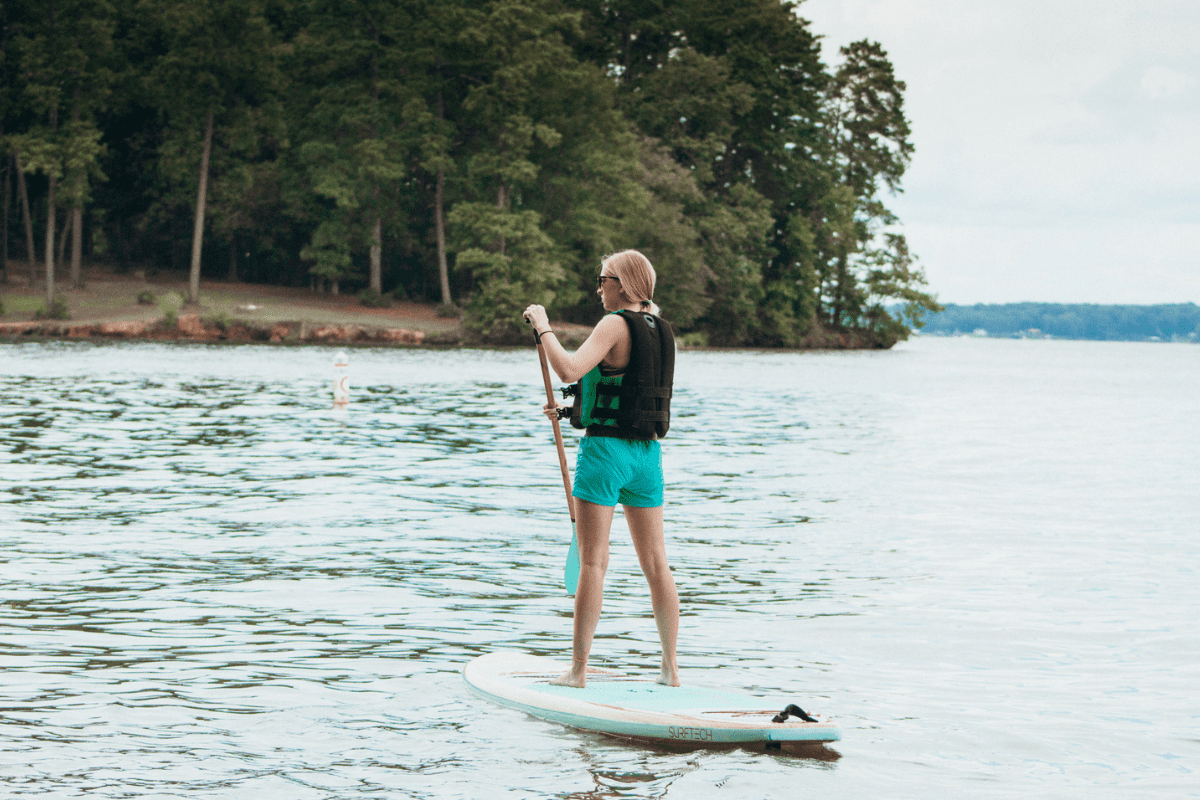
Healthy Risk Through Outdoor Adventure and Travel
Risk is a part of our everyday lives. Learning to navigate and assess risk is an essential life skill for all kids. But embracing risky play and feeling comfortable in our decision to let kids take risks can be hard for parents. How do we teach our kids about healthy risk while still maintaining a safe and secure environment? Well, you can’t always. However, there are ways to do it with intention. Today, Jen Barnes, South Carolina mom to three teenagers is here to help realize the benefits (and needs) of letting your kids take healthy risks. She shows us that outdoor adventure and travel are the two best ways to embrace healthy risk and their place in the development of our kids.
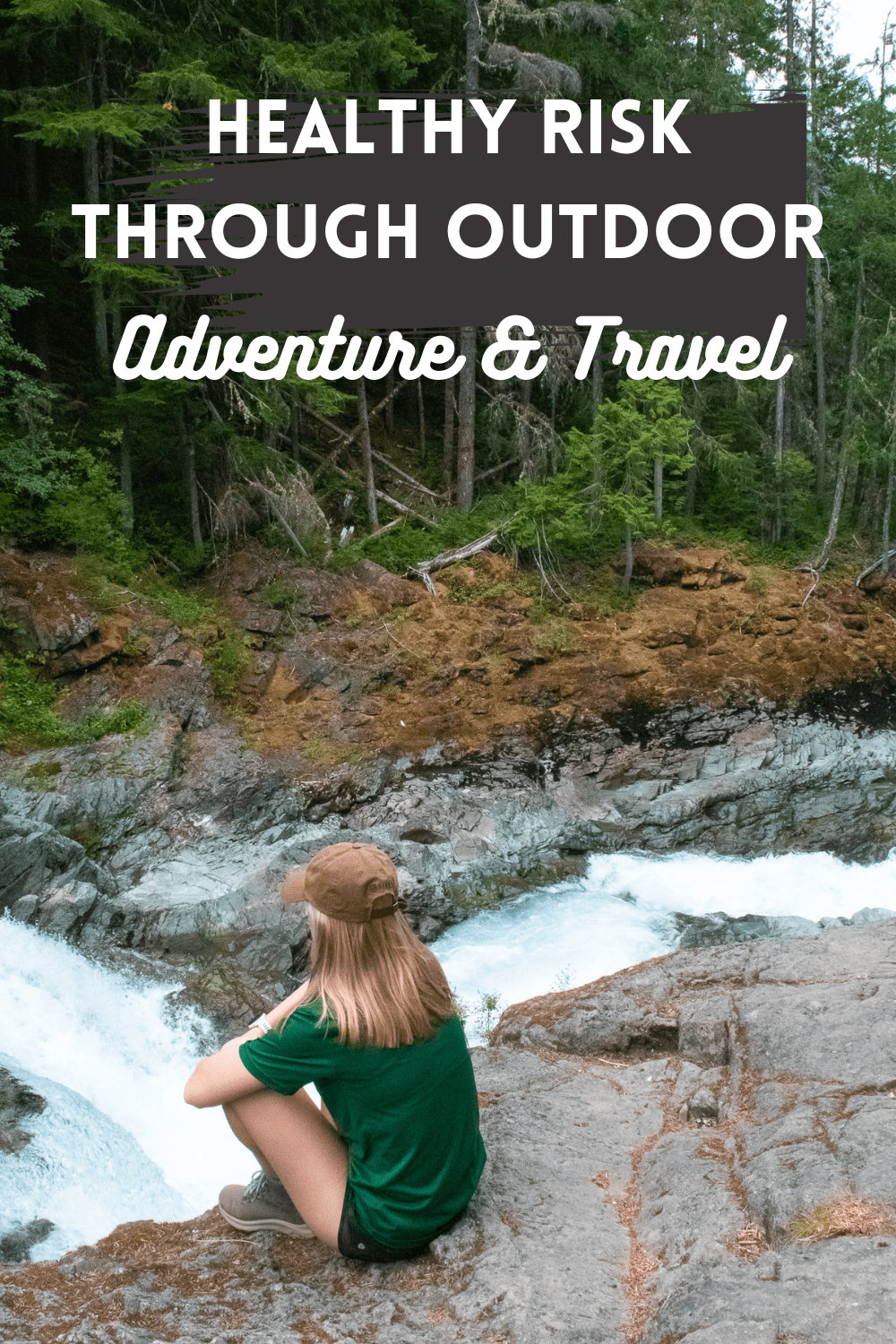
What if I fall? Oh, but my darling, what if you fly!”
What is risk?
Risk is most often defined as the possibility of suffering a harmful event or exposure to the chance of injury or loss. Risky play can generally be defined as thrilling and exciting forms of play that involve a risk of physical injury.
But did you know the synonyms of risk are opportunity, venture, fortune, and fortuity?
So, which is it: is risk good or is risk bad? Of course, it’s not that simple. The complexity is in understanding what is the relationship between risk and reward. We can give our kids understanding through experiences to guide them along in assessing risk vs reward and frame the concept of “no risk no reward” with a strong foundation.
Remember, only by taking risks can kids learn to manage risk intelligently, thus creating a habit of healthy risk-taking. Characteristics of kids who are healthy risk-takers include tenacious, persistent, opportunity seekers, and courage. Aren’t those the type of characteristics we are all trying to instill in our kids?

What does risk have to do with the outdoors?
Unlike financial investments, there is no practical risk-reward ratio in nature. Hopefully, this makes risk a little more approachable. There is a simplicity of trial and error as kids play in their natural environment. Soon, healthy risk becomes part of play and an essential part of development.
Many believe that playing it safe is the riskiest choice we can ever make because it stunts development and personal growth. Scott Sampson who wrote How to Raise a Wild Child says, “by preventing our kids from engaging in risky play we are also preventing them from how to navigate risk. A skill they will desperately need as teenagers and the rest of their lives.”
Healthy risk requires play
Children learn through play. Children learn holistically through unstructured free play outdoors. As their imaginations and creativity are sparked into flame outside, they are also problem-solving and engaging in cause and effect. It may seem like a jump to say these things have a part in risk, but as you know, lessons layer upon each other.
Every time your 6-year-old daughter runs across a wobbly log she is enjoying the beauty of her environment while learning her own physical capabilities. She may fall off, or the log may move, demonstrating to her she took a healthy risk she could manage. Even if things didn’t go the way she wanted them to she is learning. Depriving her of this experience by saying “no, that’s not safe” means you are depriving her of learning her capabilities (and limits) and embracing her potential.
The outdoors has a way of testing not just physical acuity, but also mental. The many variables of weather, wildlife, and unstable surroundings give kids a chance to try, fail, try again, and succeed in their endeavors. Learning through play in nature contributes to giving kids a strong foundation.
From a 7-year-old climbing on boulders to a 17-year-old planning a backpacking adventure, healthy risk-taking is involved and growth happens because of it. I love what our friends @laneslesstraveled on Instagram had to say about kids and risk and consequences in a recent post. Check it out for some perspective from a typical family that spends a lot of time outdoors.
Practical ways to invite healthy risk in for young kids
The obvious answer the question about how to find “healthy risks” is straightforward — get outside. But, I wanted to provide ideas for age-appropriate healthy risks and actions you can take with your kids today. While I wholeheartedly believe that any time outside is worthwhile, these ideas will give your kids a chance to grow in confidence and competence outdoors. The benefits of outdoor play will be seen over time as your child develops.
As a personal anecdote, I had an early walker who was climbing playgrounds by age 1. She was tiny and it made me incredibly nervous, but telling her no did nothing. How could I take her to play outdoors but restrain her from play? At that age, kids are impossible to reason with, so my best tactic was to stand underneath her and encourage her to press on. She and I learned together how much she was capable of and I was completely amazed.
We can learn from Linda Akeson McGurk who says, “As parents we need to resist the urge to fall into fear-based approaches that drive parents to hold on to children too tightly and prevent them from growing in healthy ways.” Holding on too tightly would have frustrated both of us.
Risky play activities for kids
Risky play involves kids experimenting with what they can accomplish and pushing themselves to figure out what will happen without knowing the exact outcome. It’s kind of like a science experiment, where kids get to test out their bodies, physical ability, environment, and coordination to determine what they can (and can’t) do and what they’re comfortable with. It’s a way for them to figure out how their bodies work and how the world works around them. Risky play doesn’t mean dangerous play.
Here are the types of “risky play” activities that kids can engage in:
- climbing (trees, towers)
- jumping off things (stairs, rocks, the diving board)
- experiencing speed (swings, ziplines, skiing, skateboarding)
- using tools (hammer, saw)
- rough and tumble play
- balancing activities
Nature fosters healthy risk-taking
Getting young children out into open spaces like the woods or a farm is helpful in introducing natural risk. Without the distractions of toys or screens, kids learn to find and make their own fun. Often you will find young kids creating their own games and contests in these outdoor spaces typically climbing over natural obstacles and jumping and running free through mud and muck. They like to push their bodies to see what they can accomplish and test the limits in a natural environment.
They fall down and get dirty a lot. Sometimes they scrape a knee or get some bruises. They fail, they succeed, they try again, they push their limits, they question their ability. And every time they do, they learn why that happened, what they’re capable of, and how to manage it differently (or the same) next time. Those types of experiences give kids the opportunity to see what produces the results they want or need in a given situation, which is exactly what risk assessment is all about.
Escalating the risk factor for older kids
As kids get older, they need healthy ways to foster independence and confidence. Older kids feel a strong need to prove themselves capable, which becomes apparent in their actions and decision-making. Of course, this plays out differently amongst the many personalities. But, that desire is there in some way.
As parents, it is our job to encourage and facilitate activities that will give our kids an opportunity to test themselves, but still keep them safe. You will notice that older kids will begin to try new things, as well as resist help, which is completely normal development.
When your child starts pushing the limits, instead of a blanket “be careful,” try asking questions like, “How do you think you’ll make it across the creek?” or “Which route are you taking up the tree?” These questions give your older kids the power to make their own decisions but also guide them into thinking through their decisions.

Try new things
Healthy risk-taking often includes charting new territory. There are some wonderful outdoor adventure parks and outdoor adventure camps that provide big fun and big challenges to kids. Floating water parks in lakes and water obstacle courses are summertime activities that give kids some extra adventure. Ziplines and ropes courses give them a thrill and test their abilities in a safe way.
Consider signing up your kids for an adventure camp to let them try new things. They will get a small taste of several activities and one is bound to be a favorite. As a side note, this also gives kids a space to try something before you invest a bunch of money or time into a specific activity.
Listen to what you kids interests are and let them start to take the lead on activities. By age 10 kids are developing pretty strong opinions and are in the beginning stages of sorting out what they like and how they want to spend their time. If you are having a tough time tearing them away from shopping excursions or playing video games, have them invite a friend along.
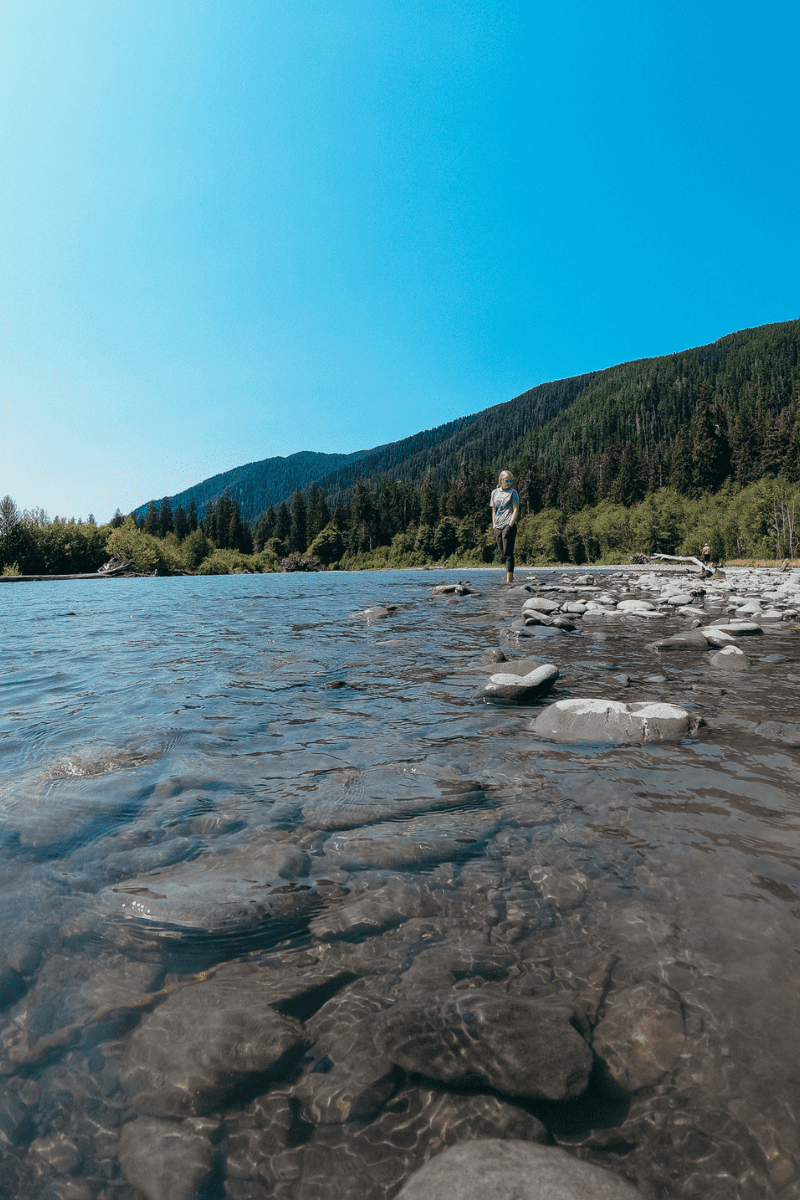
Healthy risk and teenagers
Risky behavior can seem scary and overwhelming to parents of teenagers. The adolescent stage is a powerful combination of hormone overload (and no idea what to do with those hormones), and an intense need to prove something to themselves and those around them. Much of what we hear in the news is the ways teenagers choose negative risks that have no valuable rewards.
Teenagers are looking for an escape and a boundary-pushing experience. I truly believe both of those needs can be met in the outdoors. We, as parents, can show our teens how to exchange poor risk choices for healthy risk choices.
As a parent of three teenagers, I can tell you with full assurance that kids will push the limits, whether you are involved or not. Therefore, the more you participate in their endeavors, the better, so you can help guide their choices and actions. I don’t mean that becoming a helicopter parent is the answer. That will just backfire and they’ll choose to engage in risky activities away from you, despite your warnings.
When you are with your kids as they adventure, you affirm their choices and actions. You approve their desire for bigger challenges and more independence. It’s not going to be easy (anything involving parenting rarely is). This will require you to push your own limits from time to time as well. It will require you to take a step back and let them lead. It forces you to trust them in new ways. And, it may push you into activities and adventures you never dreamed of!
For example, I never thought I would learn to surf in my 40’s. However, my kids wanted to give it a try. In order to spend time with them and be a part of their risk-taking, I had to get out there with them. It was all new and not a choice I would have made for myself. But, getting out of my comfort zone shows my teens that hard things are doable and it’s ok if you aren’t very good at it!

Healthy risk activities for teens
Next time you are thinking about outdoor activities for teens, consider adding things that provide a bit of a challenge or thrill for them and can help them push boundaries in a healthy way.
Maybe consider renting ATVs as a way to get deeper into backcountry areas. Find a hike that ends with a bang like a waterfall they can swim in or cliff jump nearby. Perhaps instead of pulling up next to a lake to fish, you can hike into a spot with your fishing gear (or kayak there). Sign your kids up for a one-on-one lesson in something wild like kiteboarding or wakeboarding. There are also a host of winter activities that encourage tweens and teens to get outside and keep things just a bit exciting.
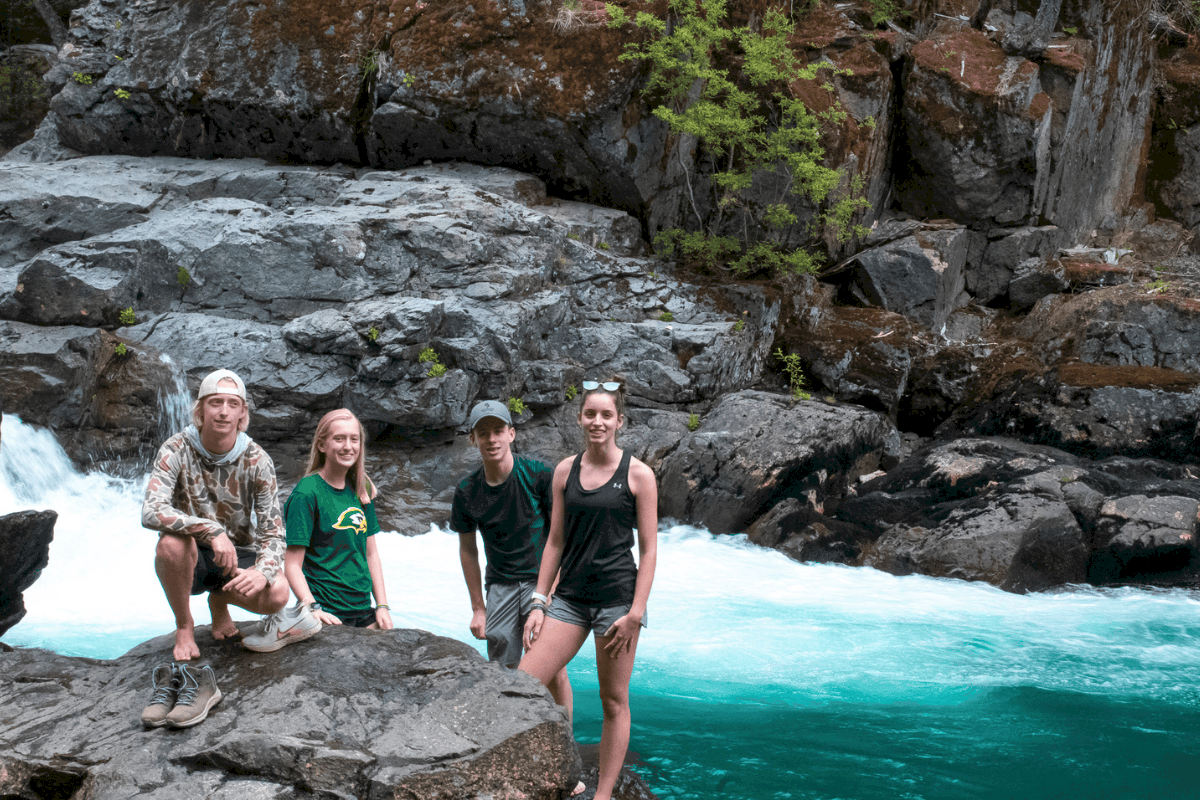
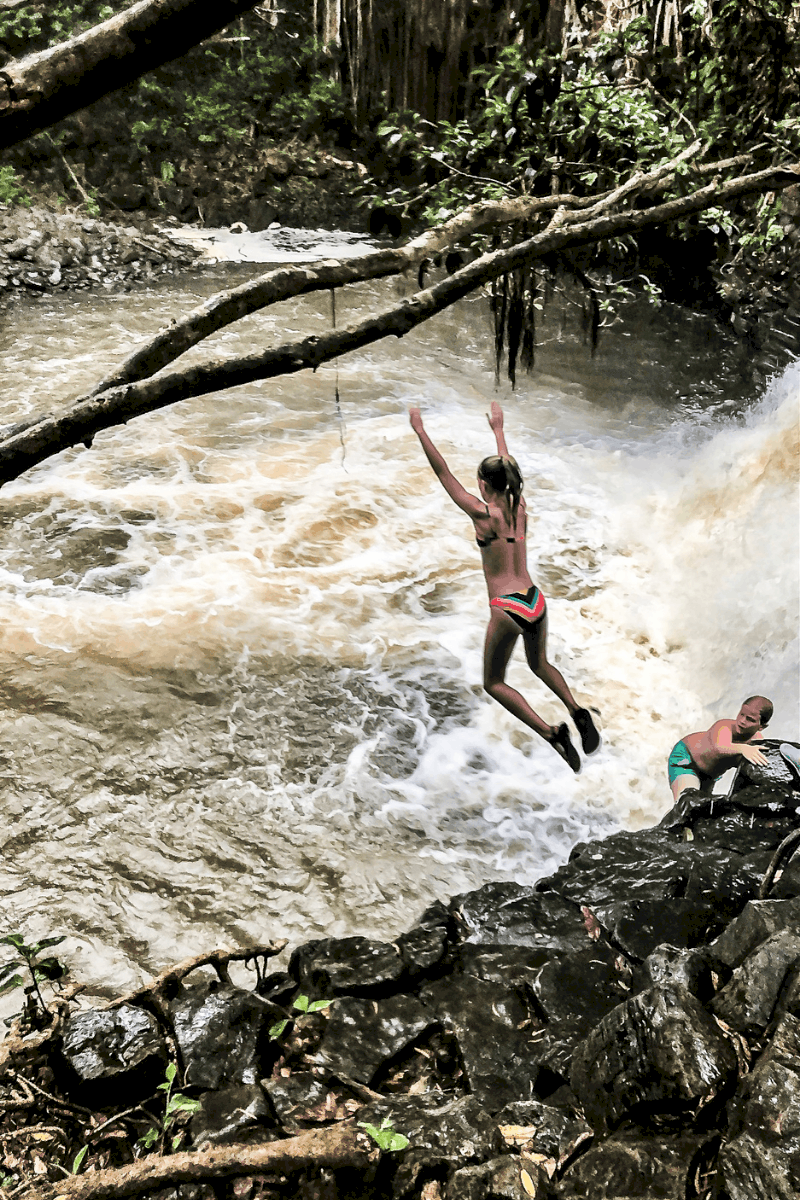
Another level of risk: adventure travel
Outdoor adventure travel may sound intimidating to some families, but I’m here to encourage you to give them a try and let you know that adventures come in many shapes and sizes. If travel in general or travel to a specific destination is an adventure to YOU, then it’s an adventure.
Traveling to a new place in and of itself is a healthy risk. The risk factor enters as you introduce your kids to new experiences that are different from your daily life. Don’t underestimate the power of exposing your kids to landscapes that look nothing like your typical surroundings and cultures that are different from your own. Even trying new foods can be a healthy risk. Getting our kids away from distractions plays a big role in their development as their confidence grows.
Outdoor adventure resorts are popping up across the world to provide families a place to spend quality time together while enjoying boundary-pushing experiences. These resorts cater to families and have a wide variety of activities like canyoneering, kayaking, zip-lining, sailing, and more outdoor adventure activities. Think of these resorts like camp for the entire family.
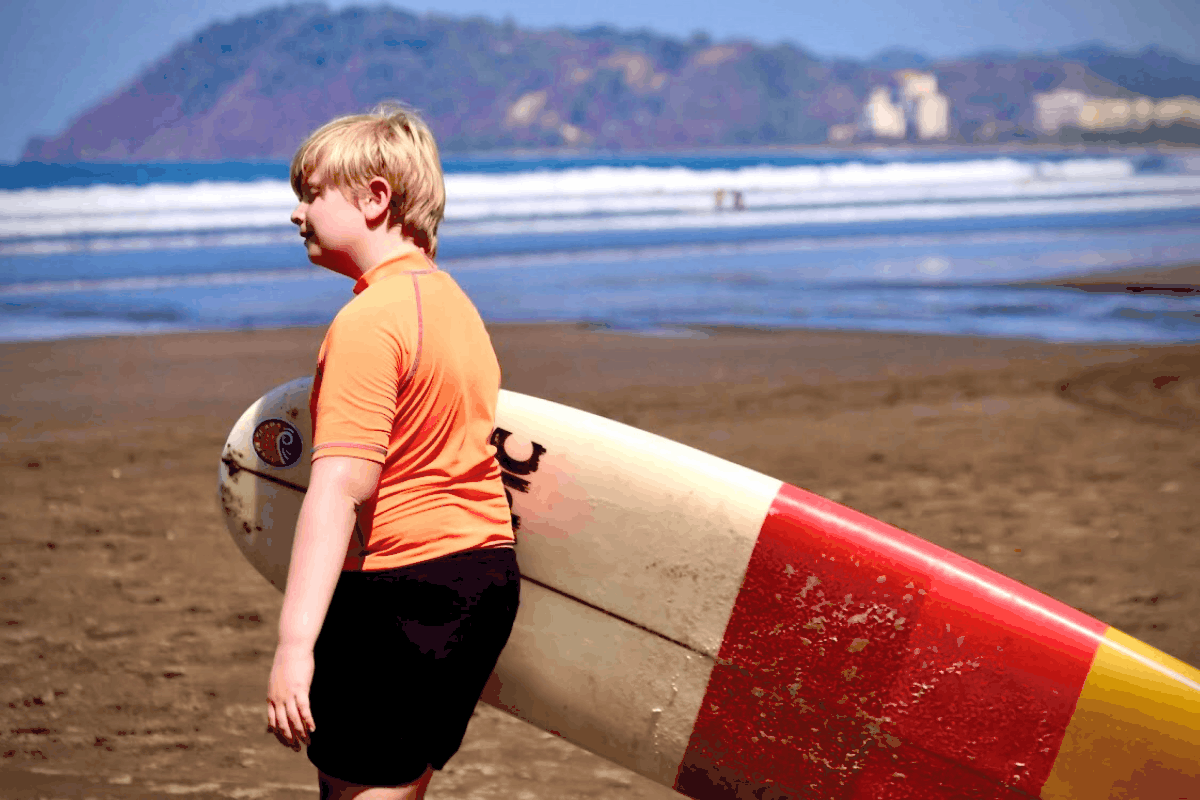
Favorite family adventure travel destinations
Our family loves traveling to new places and exploring. We love cities just as much (if not more) than beaches and mountains. There are so many amazing places out there to explore. And each destination brings on a whole new set of thrills, obstacles, adventures, and explorations. Travel is a great way to get out of your comfort zone and expand you horizons. Here are some family-friendly adventure travel destinations, perfect for finding a wide variety of activities for kids of all ages and interests,
Summer adventure travel destinations (May-September)
- Vail, Colorado
- Big Sky, Montana
- Voyageurs National Park, MN
- Maine
- Canadian Rockies
- Scandinavia
- Alaska
- Japan
- Dolomites, Italy
- Iceland
Winter adventure travel destinations (October-April)
- Costa Rica
- Patagonia (Argentina or Chile)
- Florida Keys
- Snowshoe, West Virginia
- New Mexico
- Big Bend National Park, TX
- Namibia
- Hawaii
- Belize
- Morocco
This is a vast and wide list, but I just wanted to get your wheels turning and give some inspiration. While this list is nowhere near exhaustive, you can see a few patterns. If you have water activity-loving kids, you may find more adventurous activities in the October to April list. You will find that many of the ski resorts transform in the summer months to give kids epic outdoor experiences. It’s a big world with a whole lot of variety.
*Pro tip: I keep a folder in my Instagram that I titled “Teen Destinations.” I save posts to it anytime I come across a destination or activity that looks fun, so I can easily access ideas for adventure planning.
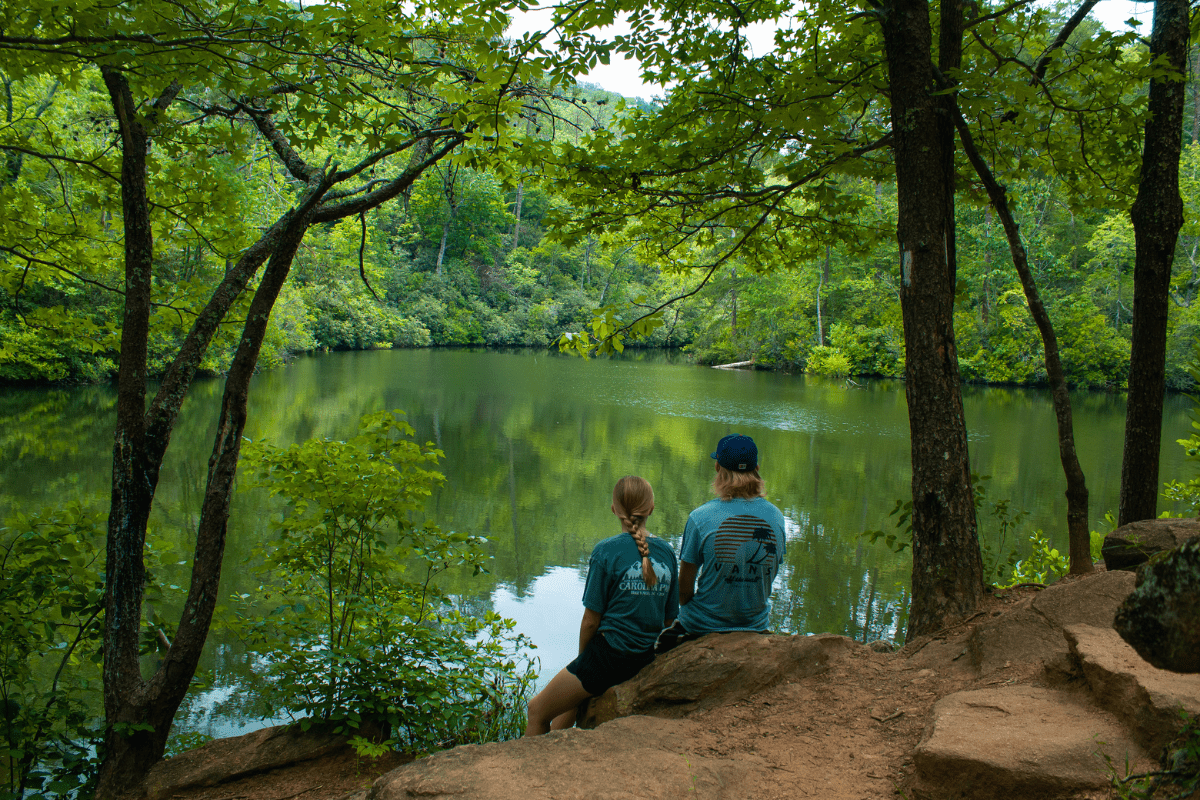
Kids and teens need the outdoors
It would be irresponsible of me not to bring attention to the staggering reality regarding kids and the outdoors as a whole. Many of the statistics we see and hear are downright scary. We have all heard the number of hours that kids and teens are spending on screens is increasing at an alarming rate. And it’s not just video games and Dude Perfect YouTube videos. More of our kids’ education is being conducted on a screen. Their main methods of communication are through a smartphone via text, Snapchat, Tik Tok, and others.
Suffice it to say, kids rarely get a break from the constant noise and distractions. Did you know that our kids’ generation is in danger of a life expectancy lower than the generation before it? This is scary and something has to change.
Here is the good news- we can take action today to do something about it. In my research, I learned some incredible things about the effects of nature on our kids’ well-being. As little as 15 minutes in the woods scientifically shows a reduction in the stress hormone cortisol. When our human senses encounter nature, alpha waves are created in our brain giving us the neural resonance of relaxation.
Nature not only makes us feel better, but it also alters our biology, measurably reducing our fight or flight response. This is the automatic physiological reaction to an event that is perceived as stressful or frightening and triggers an acute stress response that prepares the body to fight or flee. Do you see that? Nature helps our kids in risky situations.
Neuroscientists are on the path to proving the positive effects of nature. Healthy interpersonal relationships, increased generosity toward others, as well as a sense of connection to the larger community of life are byproducts. Those positive effects are motivating to give kids more outside moments. In turn, they have ways to demonstrate their ability to manage healthy risk in a productive way.
For more risky play ideas
Included are resources that will help you teach your kids about healthy risks through outdoor adventures and travel.
Check out these books for practical help:
- There’s No Such Thing As Bad Weather
- The Nature Fix
- Last Child in the Woods
- How to Raise a Wild Child
If you are looking for inspiration on family adventure travel check out this post on visiting a Dude Ranch during the winter.
What activities can you plan to introduce
healthy risk into the development of your kids and teenagers?
About the author
Jen has been married to her original adventure partner, John, for 20 years. She is a mama to 3 teenagers who, although they have busy and independent lives, love to adventure in the outdoors when they can. Jen is a native of Chicago, but has lived in South Carolina for two decades and calls it home. She’s always planning the next adventure for herself or her friends, whether near or far. Hiking, kayaking, sailing with her family, or traveling the world is all about the experience and the journey. Her extroverted nature keeps her talking and smiling with anyone she meets along the way. She’s on a mission to show other busy families that traveling with teenagers is possible and fun!
You can find Jen online in the following locations:
Instagram: @gofamilyadventure
Website: Go Family Adventure
RWMC Posts: Jen Barnes
Comments
4 responses to “Healthy Risk Through Outdoor Adventure and Travel”
[…] even realize they are teaching their bodies how to adapt to their play circumstances. Physical risky play is showing their bodies what they can and cannot handle as they fall down and learn how to get up […]
[…] Healthy Risk Through Outdoor Adventure & Travel […]
[…] Taking healthy risks through outdoor adventure and travel […]
[…] ruin it for them by being a naysayer! This will be one of those moments you can experience some healthy risk […]

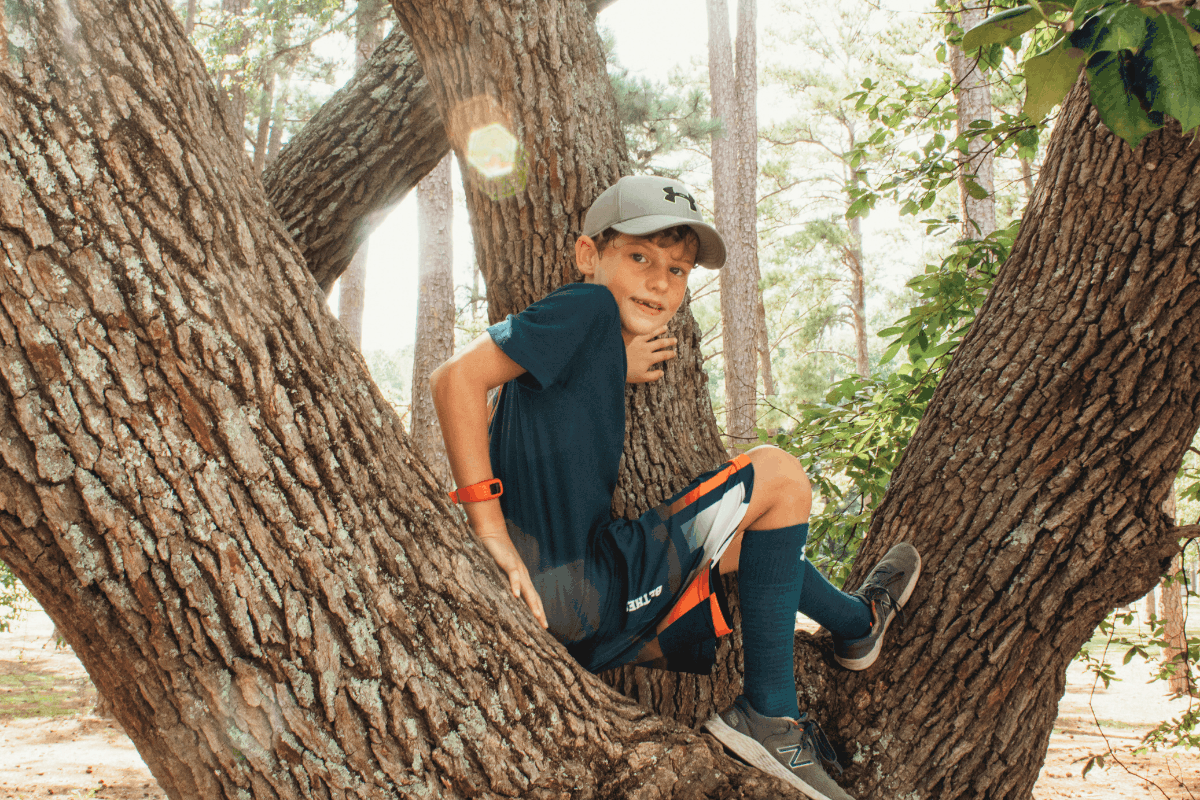
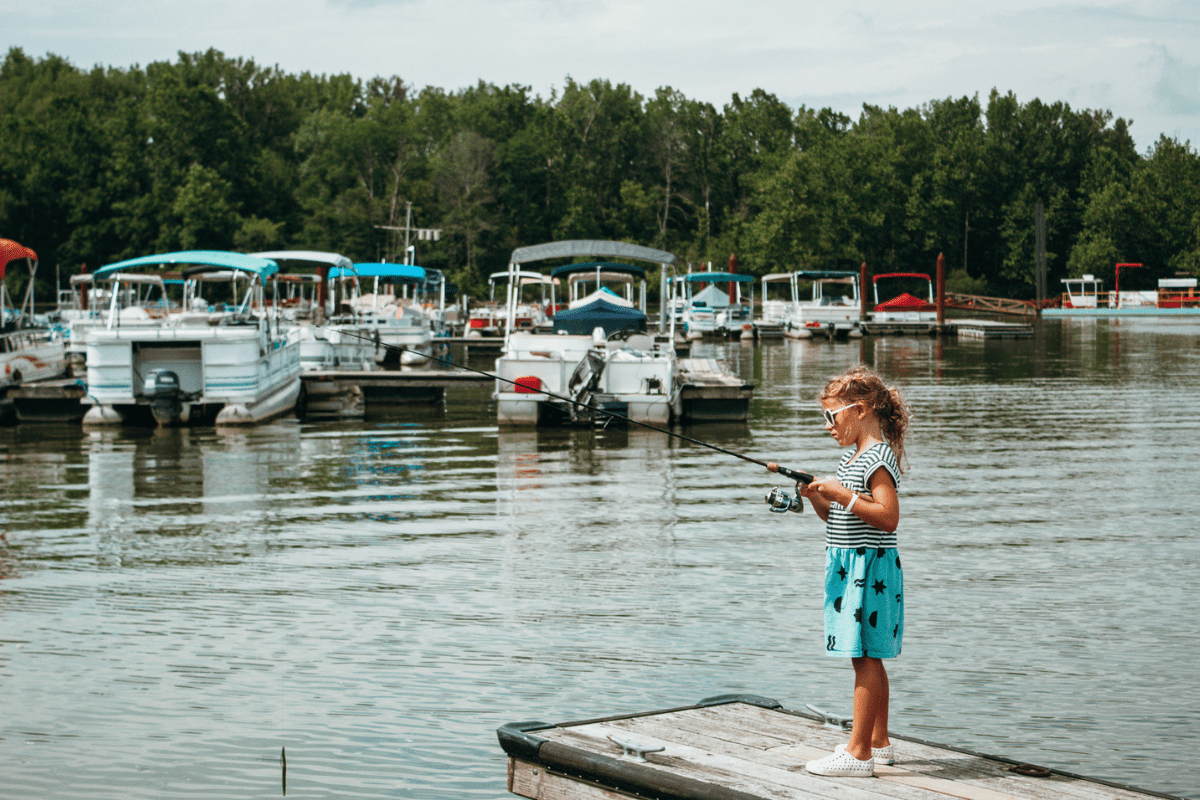
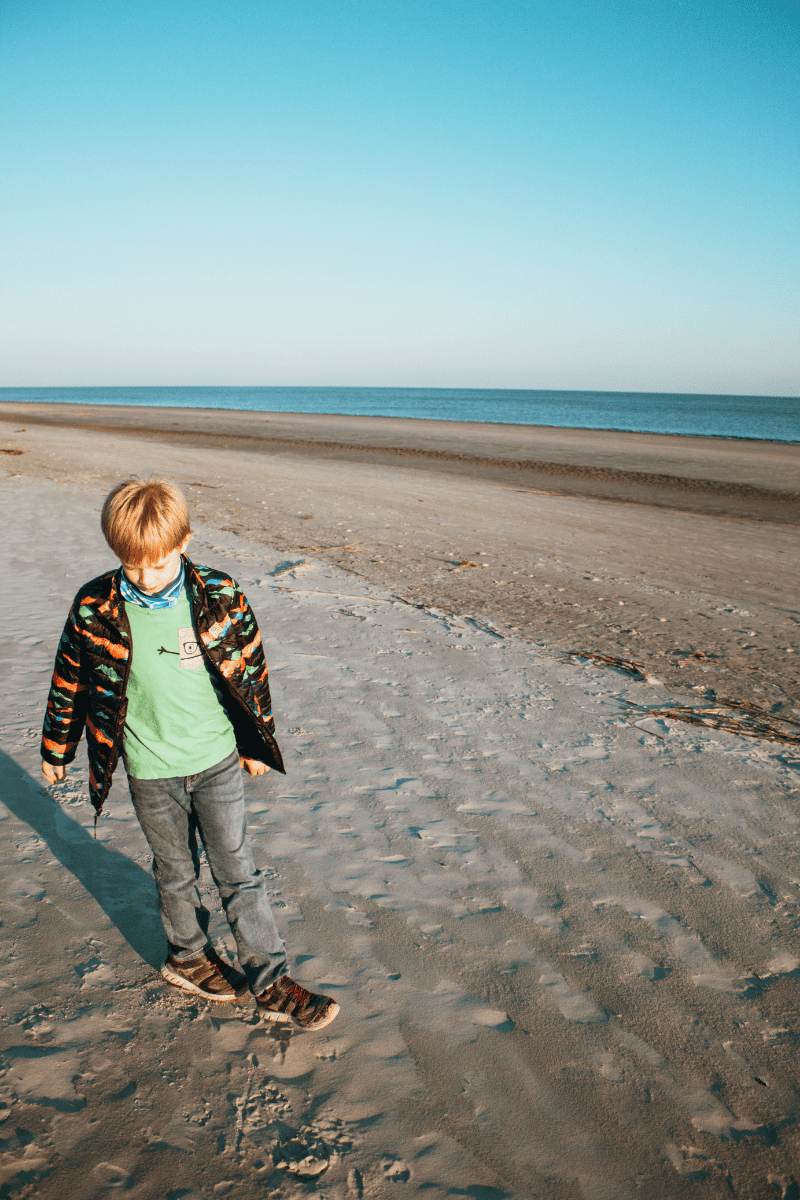

Leave a Reply